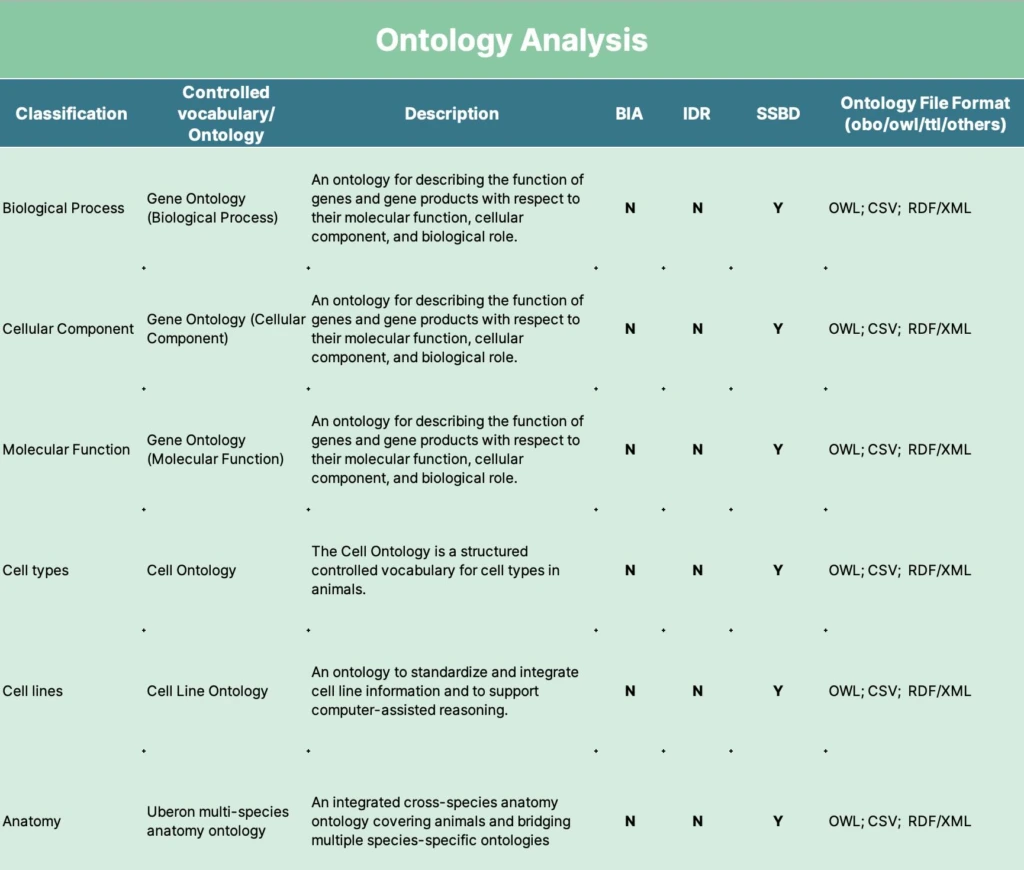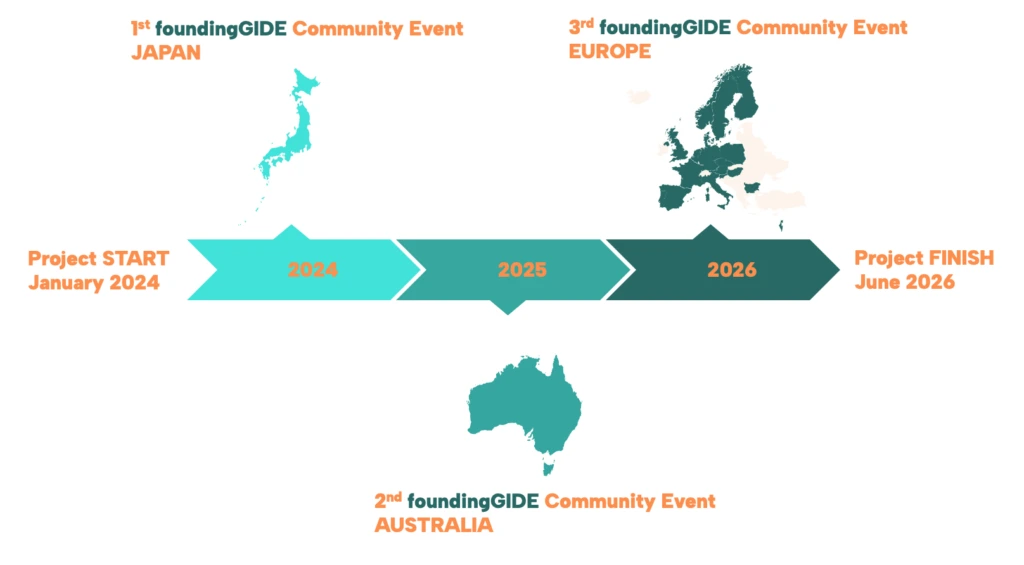What to expect from foundingGIDE?
The aim of foundingGIDE is to increase interoperability of image data. To this end we aim to coordinate community efforts around standardizing biological and preclinical metadata and ontologies starting from a high-level. Our goal is to facilitate metadata harmonization across the partner image data repositories to enhance data discoverability, searchability, and reuse.
The project started in January 2024 and will end in June 2026.
The main outputs of the project are:
- Connecting global image data communities: foundingGIDE technical developments are still in progress, with initial results expected in the second half of the project. If you are managing repositories that consider adopting or aligning with GIDE guidelines and are interested in testing these developments, consider becoming a Community Partner. Learn more about this here.
- Recommendations on a set of ontologies: identify the ontologies already used by the partner repositories, assess if we can use the same ones, and determine what ontologies are missing
- Harmonised metadata model for biological and preclinical image data
- Shared portal that enables search and analytics across partner imagine data repositories
Where are we today (updated April 2025)?
Our efforts are focused on bringing the global imaging data community together to coordinate our efforts of image data standardisation. Our first community event and hackathon in Japan in 2024 brought over 150 global experts together to exchange ideas on open science and data sharing in imaging. Our next scheduled community event is in October 2025 in Brisbane, Australia.
We are currently wrapping up the recommendations for a set of ontologies. These recommendations are based on surveying the landscape and incorporating community feedback. This set of ontologies is widely used in the partner and community data resources.

We have pulled together the metadata models used by the image data resources and currently are harmonizing the models for both preclinical and biological image data. This activity will not only allow to build a common search portal, but also serve as recommendations for other image data resources to adopt.
To demonstrate the potential for globally shared metadata standards for biological imaging data, we will develop a shared portal that enables search across imaging datasets from partner image data repositories. To build this search portal, an indexed database of the key metadata fields was developed using Elasticsearch. An API was also developed which will be used to implement a reference example data portal that demonstrates search across different biological imaging domains.
How to get involved in foundingGIDE?
Are you working with image databases or on biological or preclinical ontologies? Join us in these discussions. Drop us an email at: foundingGIDE@eurobioimaging.eu. If you are managing repositories that consider adopting or aligning with GIDE guidelines and are interested in testing these developments, consider becoming a Community Partner. Learn more about this here.
We are organizing yearly foundingGIDE community meetings and hackathons and you can find us at many other community meetings and conferences, check our events page or subscribe to the newsletter to stay updated.
Past community event:
Next community event:

FoundingGIDE project aims to build a Global Image Data Ecosystem where the bioimaging community actively contributes to and benefits from foundingGIDE initiatives, fostering a more interoperable bioimage data ecosystem.
Find out below how you can engage with foundingGIDE
Life science researchers
By collecting and documenting acquisition of image data according to the standards established by the project life science researchers can ensure the quality of their data.
Imaging scientists and core facility personnel
By providing practical insights and feedback on the feasibility and adoption of proposed standards and benefit from the adoption of standardized practices.
Data Stewards and RDM specialists
By providing feedback on the use of the adopted standards and benefit from train-the-trainer type training on the project’s results.
Imaging communities and networks
By engaging you participate in shaping best practices and ensuring that the standards developed are robust and applicable across various imaging disciplines.
Non-imaging communities and RIs
Standardized image data practices will facilitate the integration of multimodal technologies. Non-imaging researchers can benefit from image data that has been collected and processed according to best practices.
Image Data repository owners
The technical and community events provide a platform for repository owners to provide feedback on the standards, contributing to their continuous improvement and ensuring they meet practical needs.
Industry Partners
Industry partners are crucial stakeholders in ensuring that the image data produced by commercial instruments is compatible with the community standards developed.
Funders and policymakers
This engagement will help ensure that data standardization and researcher engagement outputs are aligned with broader international and European initiatives.